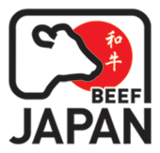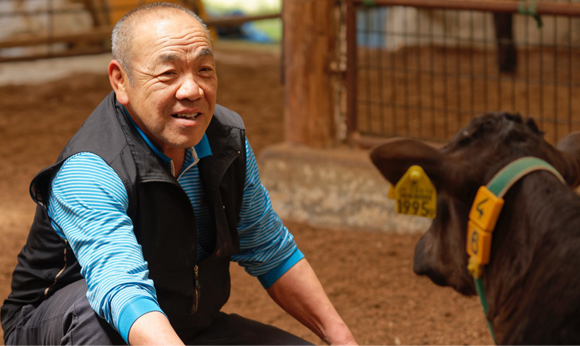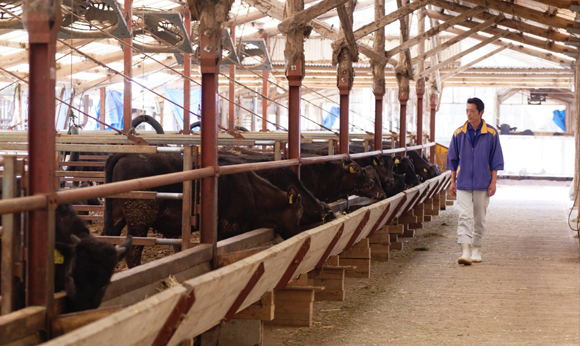Nishinoharu Farm西ノ原牧場



Our Family Pride: Continuous Challenges and Opportunities
The family efforts to produce the best-of-the-best Wagyu through ideal breeding method and affection.
When Norihito Nakanashi was 24 back in 1974, he had brought 70-80 Tajima Beef cattles to Kobayashi in Miyazaki prefecture from Kobe. That was the time when Kobe Beef started to penetrate the world. Norihito’s father had been one of the contributors to establish the Kobe Beef brand. Unfortunately, Norihito felt the limitation to breed Kobe Beef cattles in Kobe(Hyogo Prefecture) and looked for other ideal region to breed Wagyu cattles. He felt Miyazaki was the ideal place and decided to settle there. His younger brother remained at Nakanishi Farm in Kobe. And so, this is the origin of how the Nakanishi family plays a very important role in the Wagyu industry.
There are 1.6 million Wagyu in Japan. Each and every wagyu is different with variety of pedigree and characteristics. There are continuous wagyu demand on a global basis. We are focusing on producing wagyu that only matches our strict high quality standard. We are only providing the quality that we would be satisfied with. This may sound simple, however, whether that be climate, animal feed, cattle species and breeds – there are various factors that are changing every day. Characteristics of each cattle are also different. It is an arduous task for anyone to “pick the best”. It is quite complicated. Due to such complexity, we do feel the pressure and the obligation.
The ideal wagyu we are aiming for is the Tajima Beef(Kobe Beef) that was around 30-40 years ago. The “out-of-the norm” quality that Tajima Beef had provided back then, unfortunately had dissipated. It is arduous of a task for us to reproduce this under the current modern environment, however, we would like to challenge that. Kobayashi(Miyazaki Prefecture) is known for its top quality pure water, clean air, warm weather with cool evenings. It is an environment to be able to provide them organic feeds. We would like to maximize our know-how, our philosophy and provide the one and only “Nakanishi Wagyu” as the King of Miyazaki Beef.
Standardization, upsizing, and immunization that may seem somewhat too forceful…
obviously, these may be needed to provide stable supply. It may be needed to “make business”. However, cattles are not manufacturing products. They are living animals. More and more, who have never been involved in breeding, are entering this industry emphasizing “stability” “production efficiency” and “standardization”. On the other hand, start advising about “branding” and “one and only brand that stands out from the others”. This is creating contradictions.
During my youth, I had gone for walks with the cattles and fed them every day. Since I had been with them for so long, I feel I know what they are feeling and what they please. Tajima Cows are relatively small. They are very tame and have pleasant personalities. These cattles provide us various pleasure. They allow us to make a living. They are not simple cattles but are part of the family with warm personalities. They have emotions similar to human beings. I would like to give back what they are providing us. That is what I think every day. Our farm is about co-existing with these cattles, never forgetting the treasure they provide to us human beings, and never forgetting to show appreciation for such gift.


We emphasize “rough” feed ie: rice straws, fermented feed/grain(ie: soy, bran, rice powder, sweet rice, etc) We are continuously focusing on feed enhancement, specifically in the field of rice straws. How we can maximize the cow’s stomach fermentation process-this is our current area of focus. (We are also researching possible compatibility with mushroom fermentation process.)